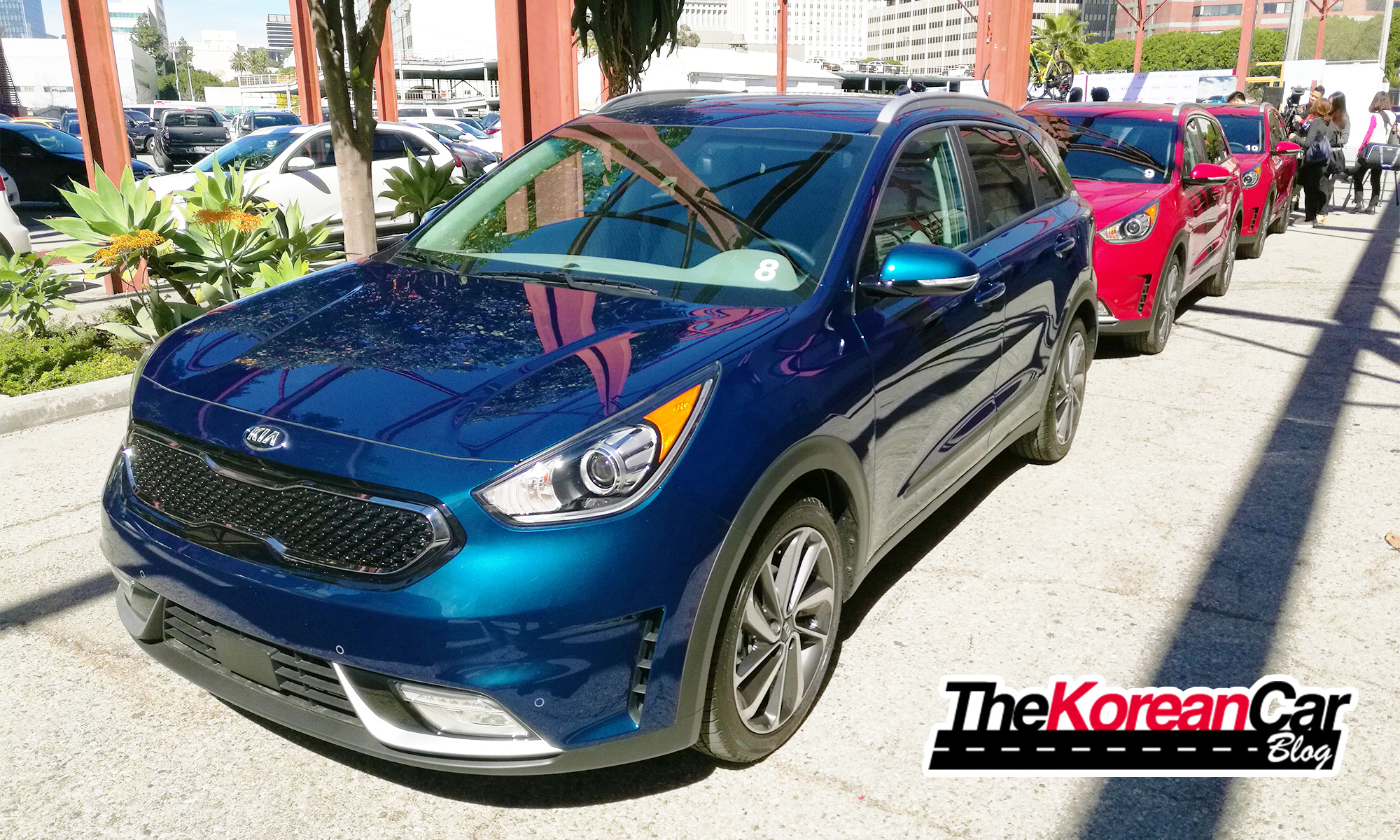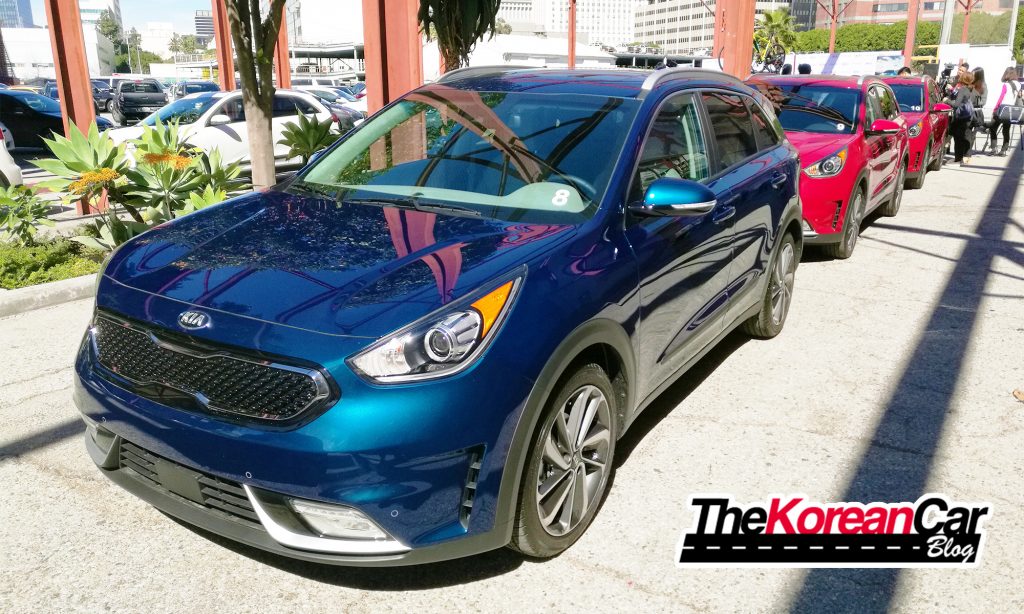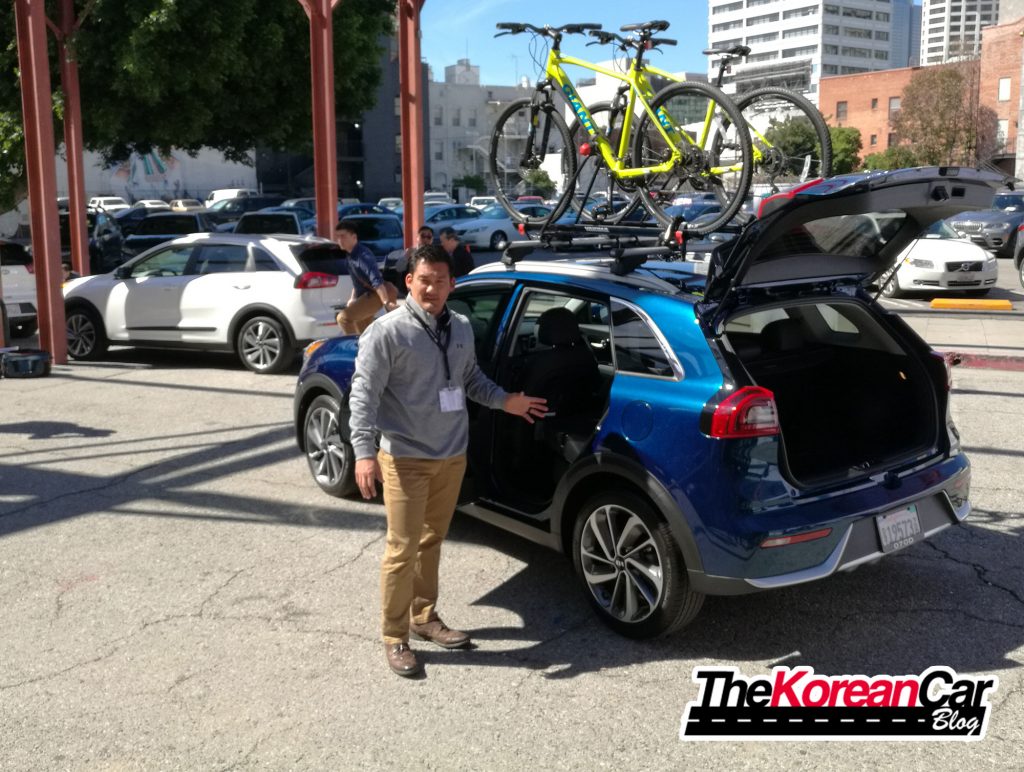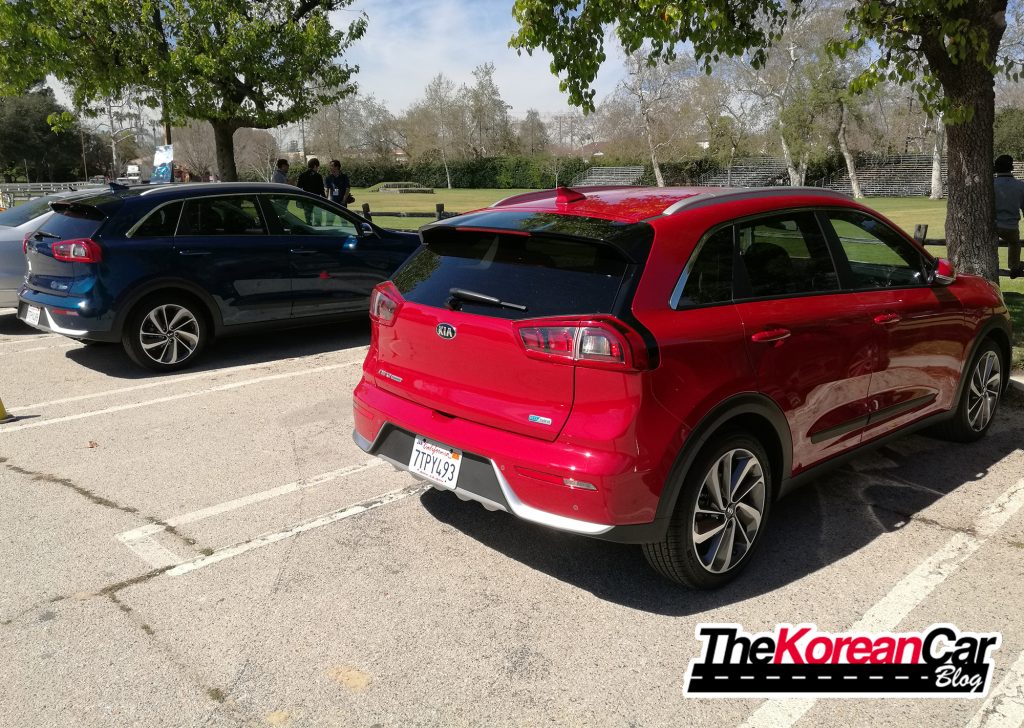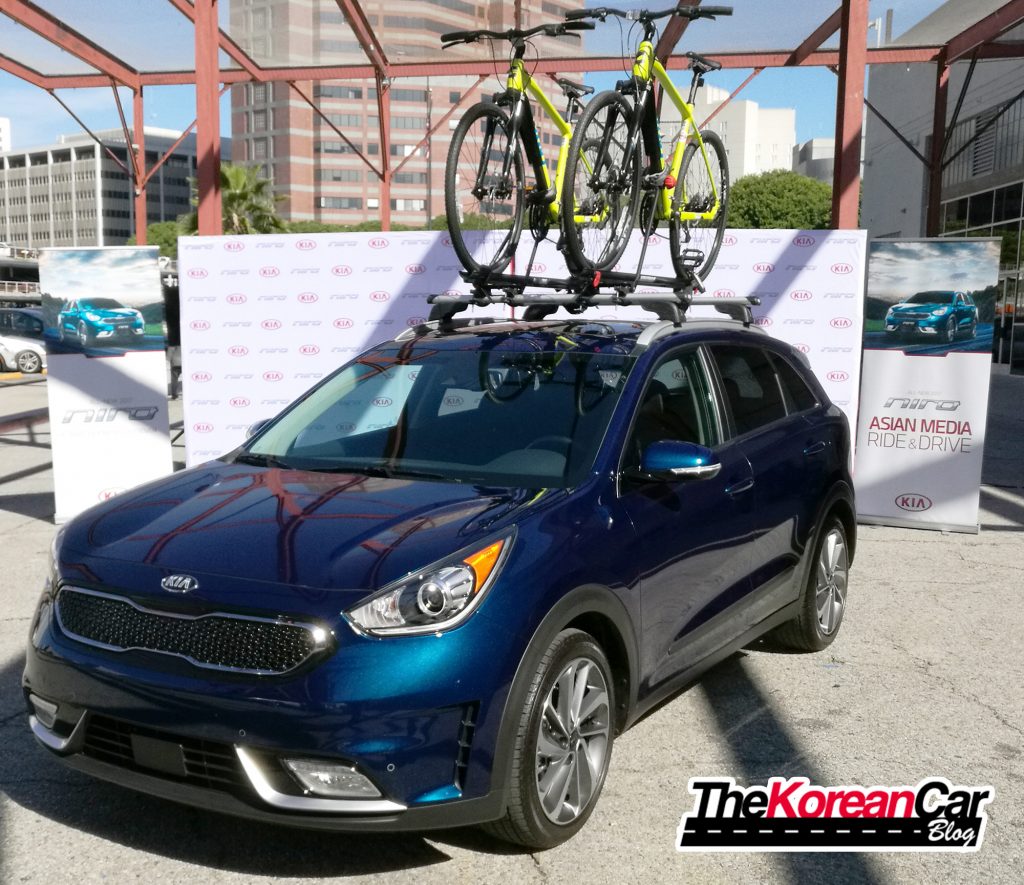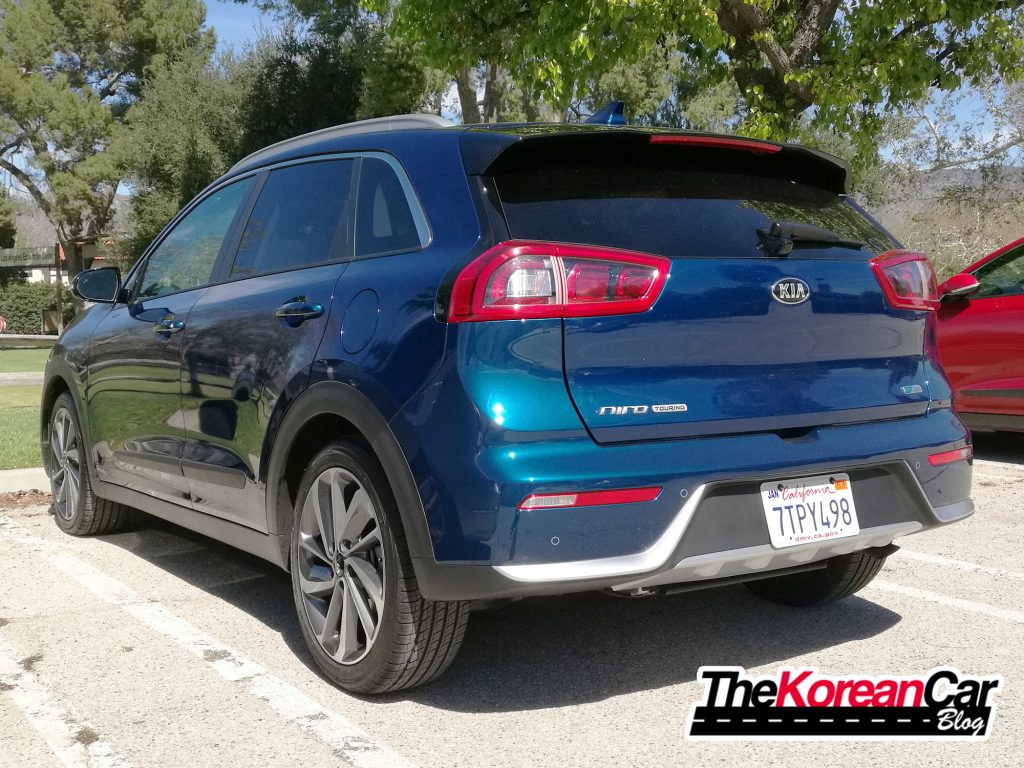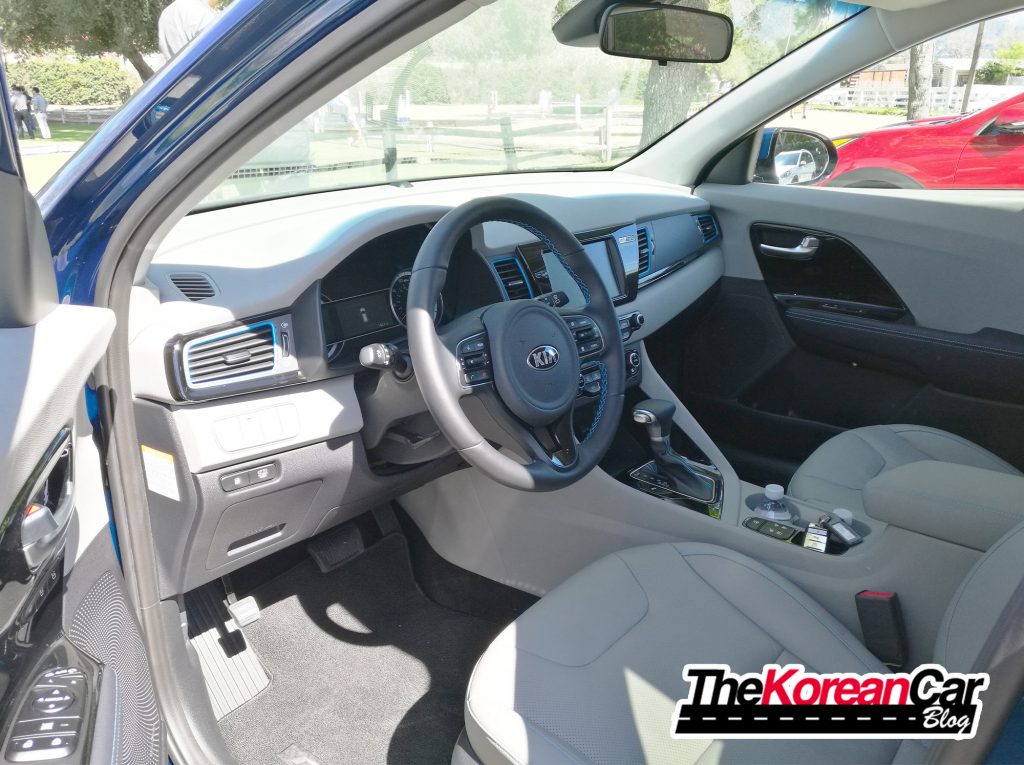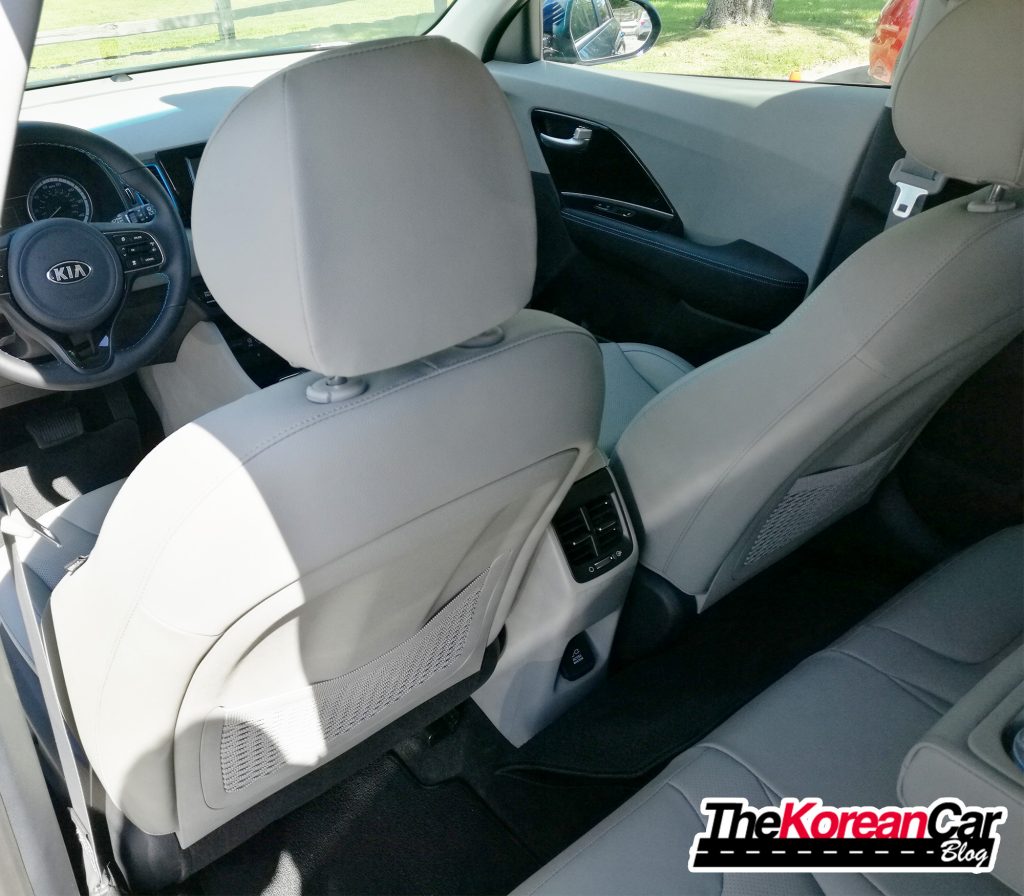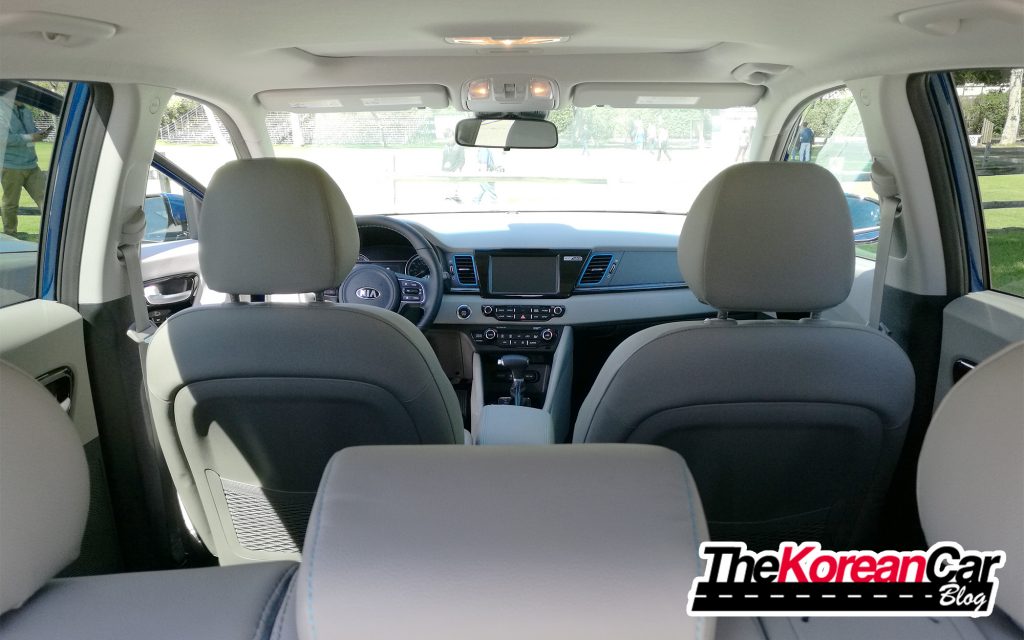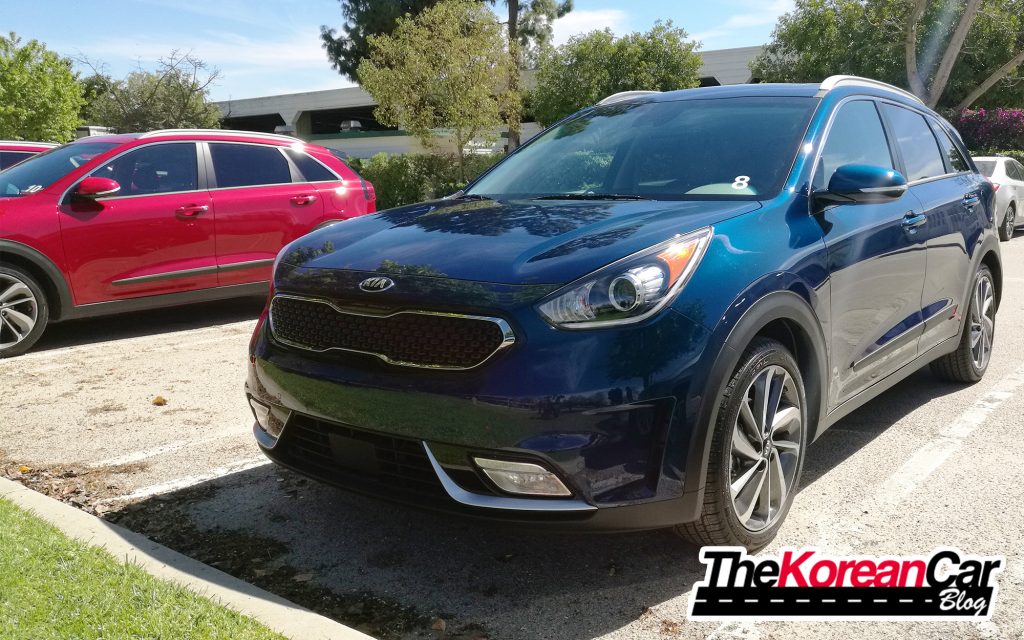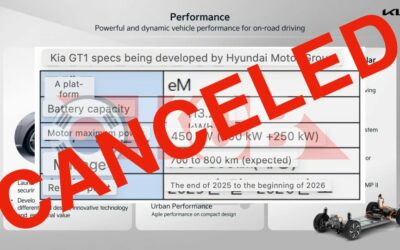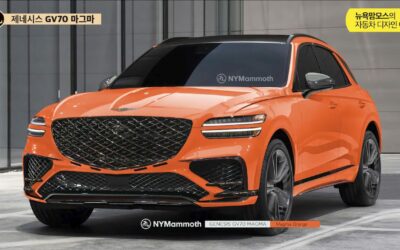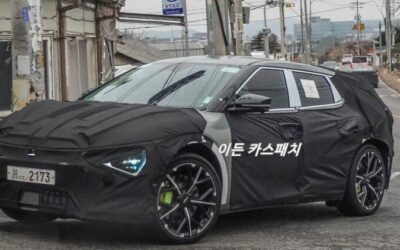2017 Kia Niro, the benefits of a hybrid without the compromises of a hybrid.
[ads id=”0″ style=”float:left;padding:6px;”]Before I got behind the wheel of Kia’s new dedicated hybrid Niro, I had to sit through a presentation given by Kia Motors America’s James Bell, Director of Corporate Communications and Garrett Ono, Product Strategist for the Niro. One of the key takeaways from the presentation was that Kia considers this car to be the fun-to-drive hybrid car.
Now, when one of my friends says, “I have to tell you this hilarious joke,” it tends to not be that funny. In the same way, hearing “This car is fun to drive” makes me skeptical. If you have to tell me it’s fun to drive, it probably isn’t. Still, at this point, I kept an open mind, and was eager to see what the car could do on the road as I stepped into the driver’s seat next to Garrett Ono.
On paper, the car is impressive. Every version of the Niro family comes in at about $2,000 less than the similarly equipped Prius, and fuel economy is so close to Prius (about 1-2mpg less) that I can’t see it being a differentiator between the two cars. However the biggest substantial difference between the two cars is the performance. While the Prius receives a total system output of 121 horsepower and 105 lb-ft torque, the 2017 Kia Niro gets a comparatively staggering 139 horsepower and 195 lb-ft torque. Hmm, maybe there is something to the marketing team’s “fun to drive” claim.
One other thing to note about the performance – the 1.6L gas engine alone is tuned to produce 104 horsepower and 109 lb-ft torque, as compared to the Prius’s 1.5L engine, which nets 99 horsepower and 82 lb-ft torque. What this means is that the electric motor doesn’t have to work as hard when more power is called for and there’s way more reserve power at any given time than you will be used to if you’re coming from a Prius.
As I got underway, I did not feel any of the hesitancy or anemic spooling of power that is so noticeable in the Prius. It feels like the Prius is always reminding you that to be eco-friendly, you need to give something up. Driving the 2017 Kia Niro, there were times that I forgot that I was driving a hybrid at all.
[ads id=”0″ style=”float:left;padding:6px;”]This was all the more impressive because the route pre-programmed into the Touring-spec Niro I was driving had me join the 5 freeway from downtown Los Angeles to Burbank, California at mid-day. If you’ve never been to LA, driving this stretch of freeway at any time of day is similar to having one of those nails they use to keep train tracks attached to railroad ties hammered into your eye. I guess they wanted me to see how fun the car was to drive in stopped traffic. Thanks, Kia.
But, their strategy did work; I noticed two important things in this otherwise painful situation. First, the car was actually pretty responsive. A gap opened up in front of me? I actually had the torque on tap take advantage of it. Second, the instant miles per gallon in stop-and-go traffic was 39 mpg. Wow! This is the type of driving where most hybrid vehicles get miserable gas mileage. If the Niro’s system for calculating this instant mpg is accurate, then this is a big advantage over other hybrid cars. The average mpg on my whole journey (about one hour of driving in mixed environments)? 47mpg. Not bad, and not too far off from the window sticker.
When Kia decided to take on the Prius, they had the option of creating a hybrid version of other models in its lineup, such as the Soul and Sportage, but opted to create a brand new platform for the Niro. One thing this allows is a much lower center of gravity, because the platform was designed to offer enough space for the batteries low down on the car. They’re under the back seats. Unfortunately, on my drive, I still noticed a lot more body roll than I would like when cornering. Not quite as much as I’ve felt when driving other high-riding Kia models like the Soul and Sportage, but still unsettling for a car that’s touted as fun to drive.
But wait, you may be thinking, isn’t this a crossover? And don’t crossovers usually have tons of body roll? The problem with these questions is that you really should stop thinking of the 2017 Kia Niro as a crossover. Sure, it kind of looks like a mix of several different generations of Kia Sportage, but that’s where I would stop. The 2017 Kia Niro is just 2 inches taller than a Prius and has just 0.8” better ground clearance. There are no plans to make an AWD version, and the seat height of the car is only very slightly higher than your average compact car. I’d classify this car as a hatchback, very similar in overall dimensions to the new Chevy Bolt. However, I can’t deny that the Niro’s exterior styling will appeal more to those who like crossovers.
As I sat in traffic in the Niro, I was able to experience the solid effort that was put into designing the interior of this car. Keep in mind, I was driving a fully loaded Touring spec Niro, so not all of the goodies will be standard, but I do think this is another place where the Niro excels. While not as quirky and space-age as the Prius interior, it is more handsome and features higher quality and softer-touch materials than buyers will be used to in this segment.
[ads id=”0″ style=”float:left;padding:6px;”]I liked how instead of feeling like I was driving a hybrid car, the interior felt more traditional and quite luxurious. The horizontally-focused design brought emphasis to the car’s generous width, and it’s clear a lot of care was taken in ensuring details such as the feel of the switchgear when pressed, the pleasant sound of the flashers and other chimes, and the vibrant blue stitching on the seats and steering wheel were perfected. It is really a premium cabin, although I do wish there wasn’t quite so much black shiny plastic around the infotainment screen. And it’s not just the driver who gets to enjoy the interior – rear passengers get plenty of room, a convenient fold-down armrest with built-in cupholders, and rear air conditioning vents in the higher-level trims.
One feature that I wish I had more time to really dive into further was the system called Eco-DAS (Driver Assistance System). Because the 2017 Kia Niro I was driving had a navigation system which had been pre-loaded with our route for the day, the car had already decided where would be the best times to cruise and the best times to maximize regenerative braking to help charge the battery based on the ascent and descent of the roads we were driving on. Some actions were taken automatically to ensure efficiency, and those actions I needed to take to improve efficiency were prompted on the color screen in my instrument cluster.
This system, along with the adaptive cruise control with emergency braking for stopped vehicles and pedestrians, the blind spot detection with rear cross traffic alert, and the lane departure warning, allows Niro owners to enjoy more efficient and safer drives.
One thing I wish the car offered was a way to adjust, or at least turn off, the regenerative braking feature. Garrett mentioned that this was something a lot of other automotive journalists had also asked for, but it isn’t something Kia is going to let us control, yet.
[ads id=”0″ style=”float:left;padding:6px;”]So, was the 2017 Kia Niro fun to drive? Hardly. Too much body roll stopped me from enjoying the turns, acceleration was less than I expected from 195 lb-ft of torque in a 3,000 pound car, and underwhelming braking power left me driving the car in a more cautious way than I normally would. I will say that it drives much better than a Prius, but I can’t give its driving engagement much more credit than that.
Still, I came away from the 2017 Kia Niro with a good all-around impression of a car that only felt like a hybrid when I first turned it on before the engine decided to kick in and when I looked at the MPG graph on the infotainment screen. If you’re looking to buy a Kia Niro, you can expect to get all the benefits of a hybrid car without the compromises you’re used to making with other hybrids. Expect to be surrounded by advanced technology features that are normally reserved for luxury cars at much higher price points, too.

